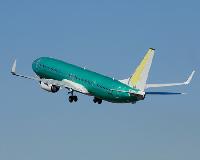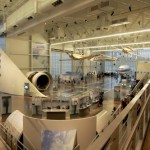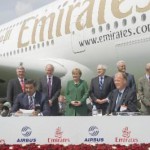Boeing recently completed work on the first BBJ 3. The BBJ 3 is a new, larger business jet based on the Boeing Next-Generation 737-900ER (Extended Range).
Seattle – The BBJ 3 has 1,120 square feet (104 square meters) of floor space, and provides 35 percent more interior space and 89 percent more luggage space than the BBJ 2. The BBJ 3’s range is between 5,435 nmi (10,066 km) and 4,725 nmi (8,751 km) depending on the number of passengers flown.
The airplane is now at DeCrane Aircraft in Georgetown, Del., where it will receive its long-range auxiliary fuel system and a Head-up Display. The fuel system, new for the model, will undergo a two-month certification process at DeCrane. The airplane’s final stop is at a completion center of the owner’s choosing, where it will receive a custom interior. The un-named customer will receive the completed airplane in 2009.
All BBJs are equipped with Blended Winglets (wing tip extensions), which reduce community noise, lower emissions and increase the airplane’s range.
The BBJ program focuses on features that help owners fly safely, efficiently, reliably and comfortably. Boeing currently is delivering BBJs with lower cabin altitude and Future Air Navigation System technology. Lower cabin altitude allows the cabin pressurization control system to regulate the cabin environment to equal a maximum cabin altitude of 6,500 feet so that passengers travel in greater comfort. Future Air Navigation System (FANS) streamlines communication between flight crews and air traffic controllers. FANS adds another layer of safety and efficiency to the global air transportation system, and allows BBJ owners to take more direct routes, shortening flight times and saving fuel.
Boeing has been selling its entire line of commercial airplanes to private aviation since the beginning of the jet age. In addition to the narrow-body BBJs, Boeing also sells VIP versions of its 787, 777, 767 and 747-8 models. All of Boeing’s business jets include top-notch product-support and dedicated field service representatives located around the world.
Photo: Boeing





